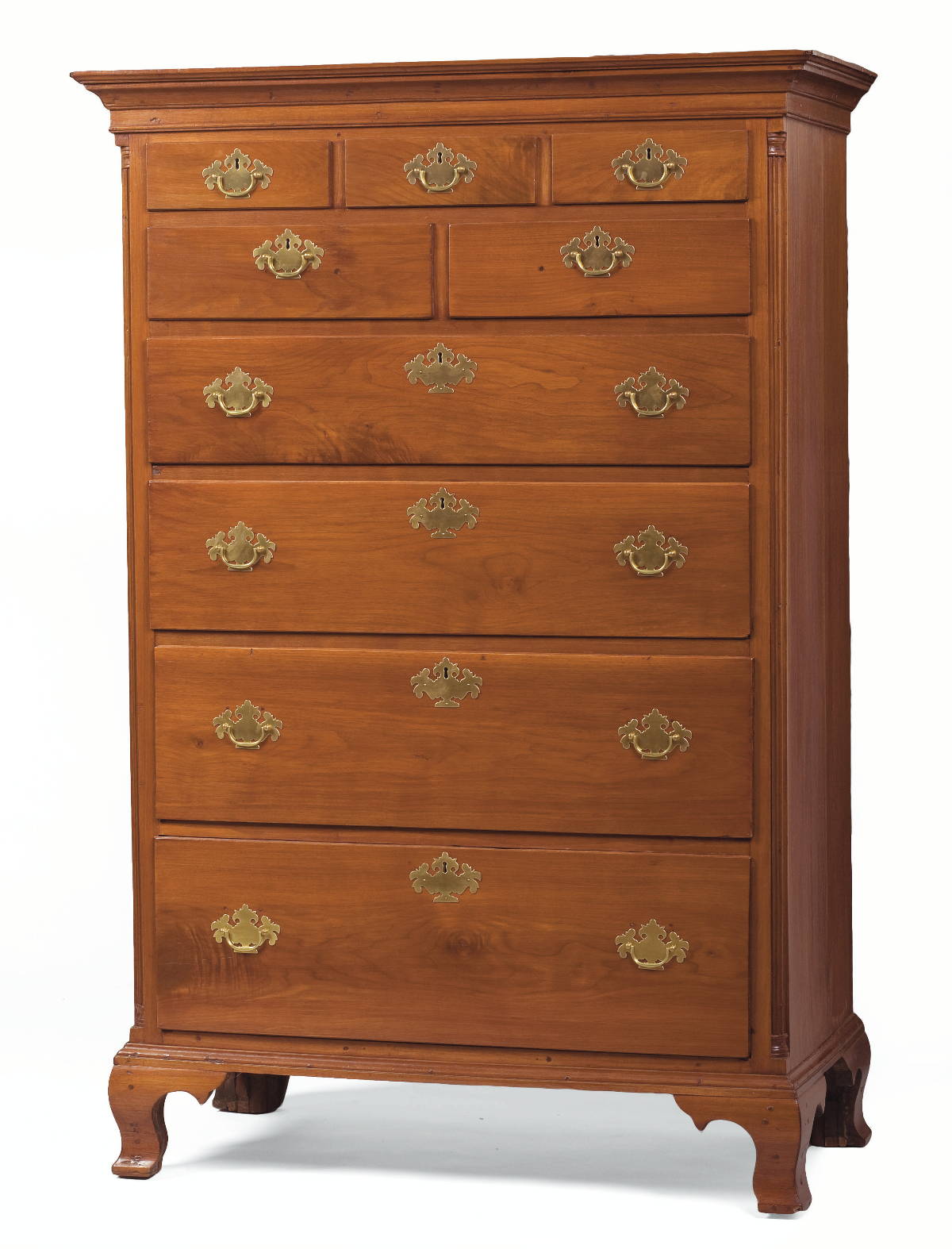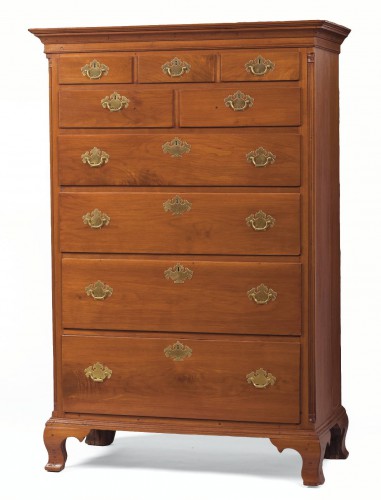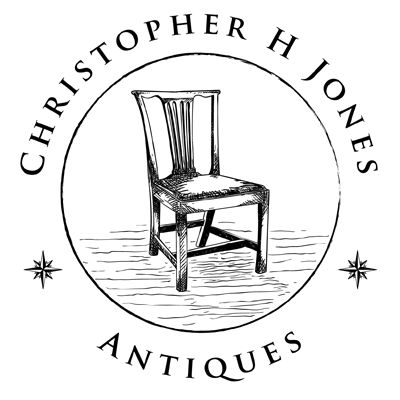Walnut Tall Chest of Drawers
Overall (at extremes): 69 ½” tall x 46 ½´ wide x 23½” deep
Unknown Maker, Winchester, Virginia c. 1780
Commentary: This chest is a fine example of the Winchester school of cabinetmaking. As a major commercial and social center strategically placed at the intersection of immigration routes leading to the west and southwest, Winchester was a thriving frontier town in the second half of the 18th century. Its craftsmen produced fine furniture, rifles and a variety of other good required by the town’s inhabitants and neighbors. Its populace also represented a convergence of cultures as the primarily English settlers from eastern Virginia and Maryland intermingled with the largely central European immigrants moving down the Valley from Pennsylvania. The furniture of Winchester was clearly influenced by traditions of both groups.
In its form, proportions and construction this chest exhibits the characteristics of this distinctive group of Valley of Virginia tall chests. The configuration of three small drawers over two larger drawers over four graduated full width lower drawers is the arrangement most frequently found in Winchester chests. The drawers are flanked by full length, fluted quarter columns. The distinctive frieze below the bold scoped cornice molding is a stylish feature rarely seen in other tall chests but which often appears on Winchester pieces. Examples appear in discussions of Winchester chests in Southern Furniture, figure 117.3, page 375 and in Wallace Gusler’s “Furniture of Winchester, Virginia” in American Furniture 1987 figure 39, page 253. The most telling evidence of this chest’s origins in Winchester can be found in the framed drawer support system built into the interior of the case. Gusler has identified this mortise and tenoned structure, which differs significantly from the commonly used systems of dust boards or runners nailed to the case sides, as a distinguishing characteristic of Winchester School case furniture.
Condition: This chest is in excellent condition and survives with superb structural integrity. It has scattered minor repairs and replacements commensurate with its age, including “re-shoeing” of the drawer runners and several drawer blocks. The feet are original with minor repairs to the facing of the proper left rear foot. The primary wood is walnut while the principal secondary wood is poplar. The back boards remain intact and are pegged at the sides, top and horizontally to secure the inner framed drawer supports. There is evidence of old pest damage to areas of the back boards and top, the latter of which appears to have been repaired and sealed. A modern lacquer finish was removed by conservators at the F.C. Vogt Company and the chest’s walnut surface brought up with padded on varnish and several coats of paste wax. The brasses are period appropriate replacements.



